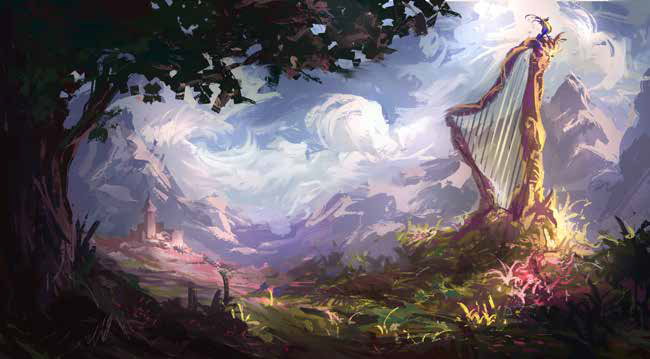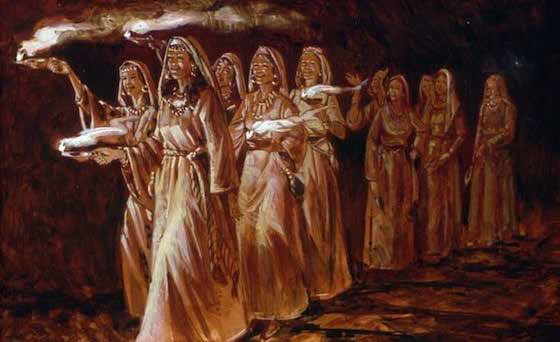Joseph Kalariparampil
Syriac theology and Syriac language Researcher
St. Ephrem Ecumenical Research Institute, Syriac, Faculty Member
Narsai (ca. 399 – ca. 503) was one of the foremost of Syriac poet-theologians, perhaps equal in stature to Jacob of Sarug, both second only to Ephrem the Syrian. He is the most important writer of the Church of the East, in which he is known as the ‘Harp of the Spirit.
The Nestorians praised him in the highest terms. They called him the “the poet of religion”, “the tongue of the East”, “doctor and tongue of the Orient”, “the admirable doctor”, and “the lyre of the Holy Spirit”. Because of his trenchant criticism against the Jacobites he earned the name “Scourge of the Jacobites”. All his reputation has earned him the title of honor Rabā ‘the Great’. At the same, it is interesting that his theological rivalries called ܠܥܡ) ܝܥ) in the district of Ma ‘alta (ܐ ܒܠܘܕ ܢ him “Leper”. Narsai was born at Ain Dulba (ܐ in the Sassanid Empire (today in Iraq). Being orphaned at an early age, he was raised by ܝܕ) near Beth Zabdai ܦܟܕ ܐܪ ܡ ܪ his uncle, who was head of the monastery of Kfar Mari (ܝܪ (ܪܕܒܙ ܬܝܒ). According to sources, Narsai must have reached the age of 103 years. He died around 503 A.D. The earthly remains of Narsai were laid to rest in a church in Nisibis.
Schooling and Teaching at School of Edessa He went to Edessa where, after completing his studies in Greek and in Biblical and theological subjects, he became a teacher of the Edessan school. When he was seven, he started his studies in the school. He was an outstanding student and had extraordinary talents. According to Barhadbeshaba, his period in the school would be between 407 and 416. Narsaispent ten years as a student at the school, and later returned there to teach (ca. 437), eventually becoming head of the school. After his schooling, he spent his time at the monastery of Kfar Mari. His directorship, which probably did not begin before ca. 450, is said to have lasted twenty years, and came to an end with his expulsion. In the controversy between the Nestorians and the Monophysites, he sided with the Nestorians who enjoyed the patronage of Hiba, bishop of Edessa. Narsai was always in favour of propagating theteachings of Theodore of Mopsuestia and Nestorius. After the death of Hiba, Narsai and his Nestorian colleagues were expelled from Edessa. The date of this expulsion is uncertain; it may have taken place at any time between 457 and 489. According to A. Vööbus, the date might be after 471. How long Narsai was at the School of Edessa, we do not know.

«Painting on the harp of the Holy Spirit» refers to St. Narsai
School of Nisibis After the expulsion, Narsai went to Nisibis. With the support of Barsauma, bishop of Nisibis, Narsai founded the Nestorian school of Nisibis. This School was organized according to the model of the School of Edessa, its Alma Mater. All the traditions in teaching and administration of the School of Edessa were put into effect at the School of Nisibis. So, one can say that the School of Edessa is transplanted to Nisibis. When his former school was ordered closed by Zeno in 489, Narsai’s reputation, renown and fame attracted almost a considerable part of teachers and students of Edessa. Narsai is considered to be the man behind the statutes of the School of Nisibis. Evidence from the statutes of the school, drafted in 496, shows that Narsai was still alive, and he must have been a venerable old teacher in his nineties. During his tenure at Nisibis, due to tensions and discord arose between Narsai and Barsauma, he left the school and went to the monastery of Kphar Mari. And later he returned the School after Barsauma had repented.
Narsai died sometime early in the sixth century and was buried in Nisibis in a church that was later named after him. The reputation of the School of Nisibis rested on its chair of biblical exegesis, headed by its first director Narsai. As the School of Edessa served as the model for the School of Nisibis, so too were theAntiochian traditions of biblical exegesis, based on the works of Theodore of Mopsuestia, handed down by Narsai to his beloved students. During his years in Edessa, Narsai was exposed to the theology and the biblical interpretation of Theodore of Mopsuestia (d. 428), whose works were translated into Syriac in and around the School of Edessa in the first half of the 5th cent. and had a lasting impact on Narsai. In the Ecclesiastical History attributed to Barhadshabba, Jacob of Sarug is explicitly mentioned as the one who preceded Narsai in composing mēmrē and triggered Narsai’s response with compositions in this same genre. Narsai and Jacob share a number of themes, motifs, and approaches, which must reflect their common Edessan background. There is an intense rivalry between these two authors. The theological position of Jacob provoked Narsai in such a way that his creation became a reaction against that of his theological rival. So, we can say that Narsai had received impulses and fruitful stimuli for his literary creation from Jacob of Sarug. Among his contemporaries, he enjoyed immense reputation. His capabilities secured him ahigh place which caused both his adversaries and some of his friends to envy him. With his poetic gifts, he charmed his hearers. His proficiency in Syriac language made him a master of the Syriac idiom.

Icon refers to the explanations of St. Narsai to the ten virgins proverb
Literary Output and Lifestyle Narsai was a copious writer, both in prose and verse. Narsai wrote in prose and verse. All of Narsai’s extant works belong to the distinctive Syriac literary genre of the mēmrā, or homily in verse. He employs two different meters— one with couplets of seven syllables (heptasyllabic1) per line, the other with twelve (dodecasyllabic2).
The mēmrā were designed to be recited in church or religious school, and each one being an exposition of a particular religious theme. The later Syriac writer Abdisho of Nisibis suggests that Narsai wrote 360 mēmrē in twelve volumes.
Although many of his works are likely lost, around eighty of his mēmrē (ܐ̮̮ ܡܐܡ ), or ܪ verse homilies are extant. Many mēmrē deal with biblical interpretation, either OT or NT; others are devoted to specific liturgical feasts or address topics of theological or moral significance. His works comprise commentaries on the Bible, explanation of the Holy Sacrifice of the Eucharist and Baptism, a book on the corruption of morals, a number of consolatory poems, expositions, canticles, hymns, sermons, and instructions. Narsai’s literature on liturgical subjects reveals his desire to foster church life and make its liturgy alive and meaningful. His literature gives us an insight into that which Narsai taught at both Schools. Some of his works are meant for didactic needs. Hiscommentaries on baptism and Eucharist are an inspiration throughout the centuries for the scholars and believers. His literature testifies to his deep knowledge and great command of language. His style is polished, elegant, and rich in similes and occasionally decked with rhymes, either in the beginning or at the end of the verses.
Every one of his strophes almost always contains acomplete sense. The divine office of the East Syrians contains a good part of his writings. Some of his homilies are 6 mēmrē on Creation, 4 on baptism and Eucharist, 5 on dominical feasts (Nativity, Epiphany, Passion, Resurrection, Ascension), 6 on OT topics (Enoch and Elijah, Flood, Blessing of Noah, Tower of Babel, Tabernacle, Brazen Serpent), 5 on Gospel Parables (Ten Virgins, Prodigal Son, Rich man and Lazarus, Workers in the Vineyard, Wheatland Tares). A. Mingana provided the first list of all existing mēmrē. He edited 47 of them in his 1905 publication. Apart from mēmrē, a number of sugyoto carry Narsai’s name, but most of these are very likely not his. Narsai’s mēmrē focus on salvation history as an ongoing learning process for humanity, in which Christ’s incarnation, with his two natures (God and man) preserved intact, is the key moment. The great majority of mēmrē reveal that his heart found its pleasure in the sphere of practical religiosity. Narsai’s mēmrē represent an important phase in the formation of East Syriac theological and exegetical tradition, which depended heavily on the thought of Theodore. The mēmrē were widely read and used in the later tradition.
He was an ascetic and chastised his bodily needs. The ideal of poverty found an eminent exponent in him. He had no other possessions than his books. He followed a rigorous lifestyle, by eating only the minimum, using a very simple bed, following poverty, inflicting selftorture and so on. He wrestled with his own sleep and tried to sleep very little.
His life was always subject to agitation by the undertakings of his theological adversaries. His adversaries used every opportunity to needle him and to discredit him in the eyes of the people.
Main Source – A. Vööbus, History of the School of Nisibis, CSCO 1965 ,266.

writing and symbols to express the Sumerian and Assyrian history and culture.

Alongside Sumerian cuneiform my art encompasses the Neo-Assyrian writing in the form of tree trunks, being the beginning and the trunk of the big tree of the languages in the world. I aim to pay homage to the roots of these intertwined civilizations.



